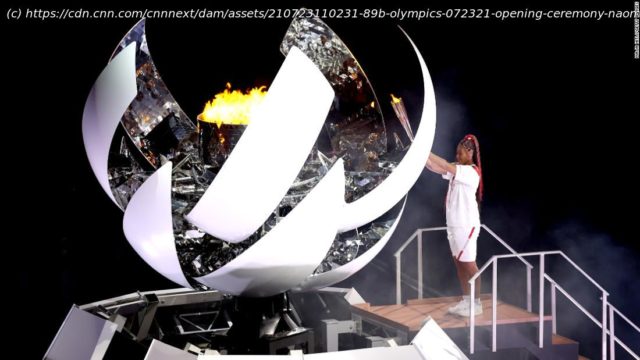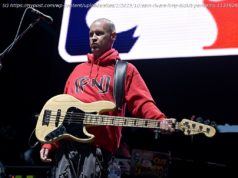Rather than presenting a glitzy production, the four-hour Opening Ceremony of the Tokyo Summer Olympic Games contemplated how, especially in the wake of a global pandemic, the sway of sport can keep us connected, writes Amy Bass.
Rather than a glitzy production filled with highly choreographed dance numbers, the four-hour ceremony contemplated how, especially in the wake of a global pandemic, the sway of sport can keep us connected. The first minutes of the ceremony powerfully offered glimmers of hope for the days ahead, as solitary athletes trained on treadmills and rowing machines, together yet alone, with threads eventually stretching across the infield to connect them, to connect us. The role of Opening Ceremony is critical to every Olympics; it is designed to create a line of demarcation between everyday life and Olympic events, no mean feat during a global pandemic. An array of symbols — the Olympic flag, anthem, oath, torch, and, of course, flame — help transform the individual teams who enter the stadium as national entities into a universal body, ensuring that anyone who stands on a victory dais will represent more than just where they are from. At the Closing Ceremony, the athletes will not enter via nation, but rather as a wider community, one that hopefully will return to everyday life with a more global perspective. But just as Covid has refused to acknowledge borders, it will also fail to recognize where everyday life ends and Olympic life begins. Sport is no island, the Olympics included. Unprecedented moments In this Opening Ceremony, children led each team to the music of video games — a contrast with the ceremony’s more somber moments, including a moment of silence for all lost to Covid, as well as an unprecedented mention of the Israeli team murdered at the Munich Olympics in 1972. Families of the Israeli athletes had been campaigning for this for decades, particularly around the 40th anniversary at the London Games in 2012. As always, the Parade of Nations provided a lightning-round course in geography, featuring countries as small as Andorra and as large as Argentina, whose flag bearers, Santiago Lange and Cecilia Carranza, walked arm and arm, their teammates dancing behind them. The Greek delegation, per tradition, entered the stadium first, symbolic of the Ancient Games, followed by the second-ever refugee team. The host delegation brought up the rear, led by wrestler Yui Susaki and Washington Wizards basketball player Rui Hachimura. Historically, each host city hopes that its Opening Ceremony will be unprecedented in some way. In 1980, the heavily-boycotted Moscow Games included thousands of spectators holding up cards to create the image of Misha the Bear in the stands, while four years later in Los Angeles, a man flew into the stadium via jet pack. Flash forward to London in 2012, where director Danny Boyle orchestrated someone closely resembling Queen Elizabeth II jumping out of a helicopter and onto the infield. To be sure, a parachuting monarch was impressive, but the moment of greatest impact tends to be the lighting of the Olympic cauldron, which marks the symbolic official start to competition. For example, the image of Tommie Smith and John Carlos raising black gloved fists during the victory ceremony of the men’s 200-meters dominates memories of the Mexico City Olympics in 1968, but 20-year-old hurdler Norma Enriqueta Basilio also made history when she became the first woman to light the cauldron in an Opening Ceremony.
Домой
United States
USA — Music Naomi Osaka crowned an Opening Ceremony filled with dramatic moments






